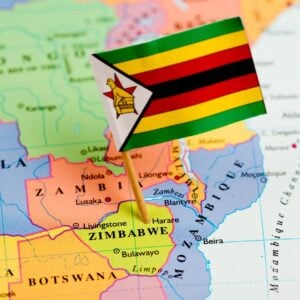Comoros, a small island developing state in the Indian Ocean, faces increasing risks from tropical cyclones, sea level rise, erratic rainfall, and extreme heat. According to the World Bank’s Climate Risk Profile, “once-in-a-century” rainfall events could occur nearly twice as often by mid-century, while rising seas threaten to inundate coastal communities. With nearly 40% of the population living below the poverty line and fragile infrastructure, disasters pose a serious threat not only to lives and livelihoods but also to the country’s developmental progress.
Recognizing this urgency, Comoros began mapping its policy landscape in 2021 to strengthen the integration of disaster risk reduction (DRR) and climate adaptation actions. This process laid the groundwork for updating the 2015-2014 National DRR Strategy. In June 2024, the country adopted a new DRR Law, which clearly defined institutional responsibilities, bolstered resilience at national and local levels, and established the National Emergency and Resilience Fund (FNUR).
By December 2024, following broad national consultations, Comoros’ Cabinet endorsed the updated National DRR Strategy and its Action Plan. Developed using a Comprehensive Disaster and Climate Risk Management approach, the strategy was supported by the UNDRR Regional Office for Arab States through the Resilience Building and Disaster Response Management in the Indian Ocean (RDRM-IO) programme, co-funded by the European Union and implemented with partners including the Indian Ocean Commission, PIROI, and UNDRR. The strategy aligns with the Sendai Framework for DRR, the Arab Strategy for DRR 2030, and the African Agenda for Action. On 14 September 2025, President Azali Assoumani officially validated the National DRR Strategy and Action Plan for 2024–2030 in Moroni.
To translate the new law and strategy into practice, Comoros conducted a table-top simulation in September 2025, involving a multi-hazard scenario of a tropical cyclone, cholera outbreak, and volcanic activity. Organized with UNDRR and the Italian Red Cross, the exercise tested the country’s new institutional arrangements, coordination mechanisms, operational capacities, and early warning and response systems. National and local authorities, technical services, and humanitarian partners participated, rehearsing decision-making and validating standard operating procedures.
The simulation demonstrated that the new DRR Law provides effective mechanisms for coordination among stakeholders at national and sub-national levels during emergencies. It also highlighted areas for improvement, such as strengthening information sharing across government entities and ensuring continued training for activating procedures outlined in the National Contingency Plan. By linking policy frameworks with operational preparedness, Comoros has shown how governance reforms can directly enhance national readiness and resilience against disasters.







